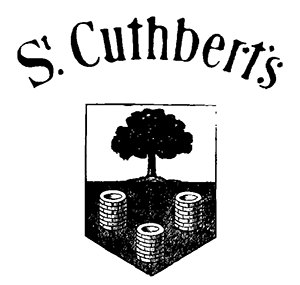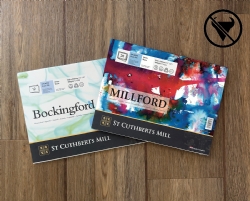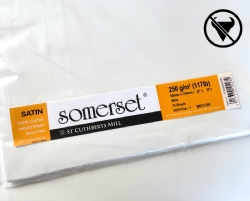St Cuthberts Mill Paper
Call or email:
+44 (0)1749 672015
sales@stcuthbertsmill.com
St Cuthberts Mill Paper
Watercolour
Printmaking
Digital Fine Art

Animal Products In Paper
St Cuthberts Mill has always been honest about animal products used in making our papers. Most of St Cuthberts Mill papers do not contain any animal product in their recipes. There is only ONE series of papers that contains gelatine with the rest containing no animal products.
The one paper that does have gelatine in its recipe is Saunders Waterford for a very important feature. The surface of Saunders Waterford® is dipped through a bath of gelatine, coating the paper on both sides. This gelatine layer makes the paper very strong, giving the artist a watercolour paper that’s tough with the ability to take robust painting techniques like heavy multiple washes, scratching, scrubbing, and masking fluid without the surface from pilling or tearing.
What type of gelatine is used in Saunders Waterford?
The gelatine we use at St Cuthberts Mill for Saunders Waterford is bovine in origin and a by-product of the meat industry.
Are any watercolour papers made without animal products in their ingredients?
The recipes for Bockingford® and Millford watercolour papers do not contain any animal products. They do not have a gelatine surface sizing, so they are not as strong as Saunders Waterford®.
Are there any printmaking papers without animal product in their ingredients?
Somerset® does not contain any animal ingredients in its recipe. The paper needs to be soft and malleable to conform to some printmaking techniques.
Are St Cuthberts Mill papers vegan?
Unfortunately, we cannot claim even the papers made without gelatine are vegan. This is because we use natural woollen felts to create the surface texture of our papers. A sheep’s fleece is shaved at least annually for its own welfare, and St Cuthberts Mill’s marking felts are woven using this natural material instead of using plastic.
Why do papermakers use woollen felts instead of synthetic felts?
Woollen felts have a random pattern to their weave. It is this irregular surface that creates the surface texture of St Cuthberts Mill papers. A random surface texture is more pleasing to the eye, as the surface is visible with both watermedia and printmaking artworks, it is important the look of the paper adds to the composition and doesn’t detract from it. Synthetic felts often have a regular pattern, giving a paper with a surface that is uniform and frequently mechanical looking.
If you are after a paper that doesn’t directly contain animal products in its recipe, look towards trying Bockingford®, Millford and Somerset®.
To learn more about surfaces of St Cuthberts Mill papers follow the link:
https://www.stcuthbertsmill.com/advice-centre/?id=1001


